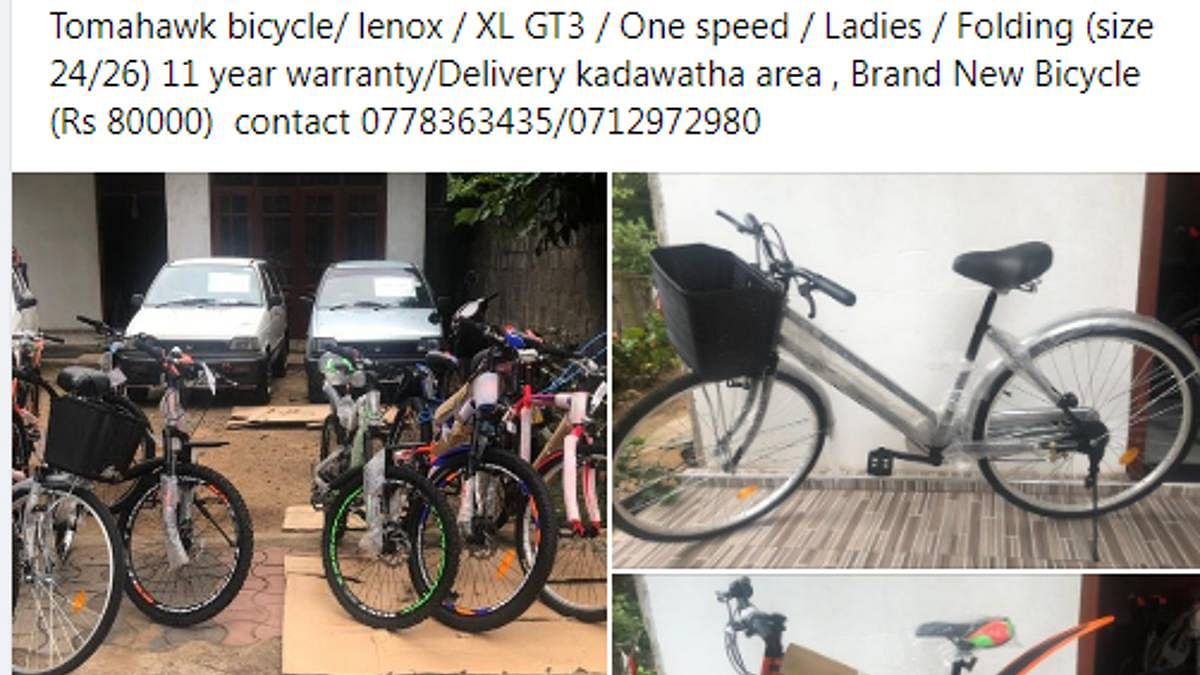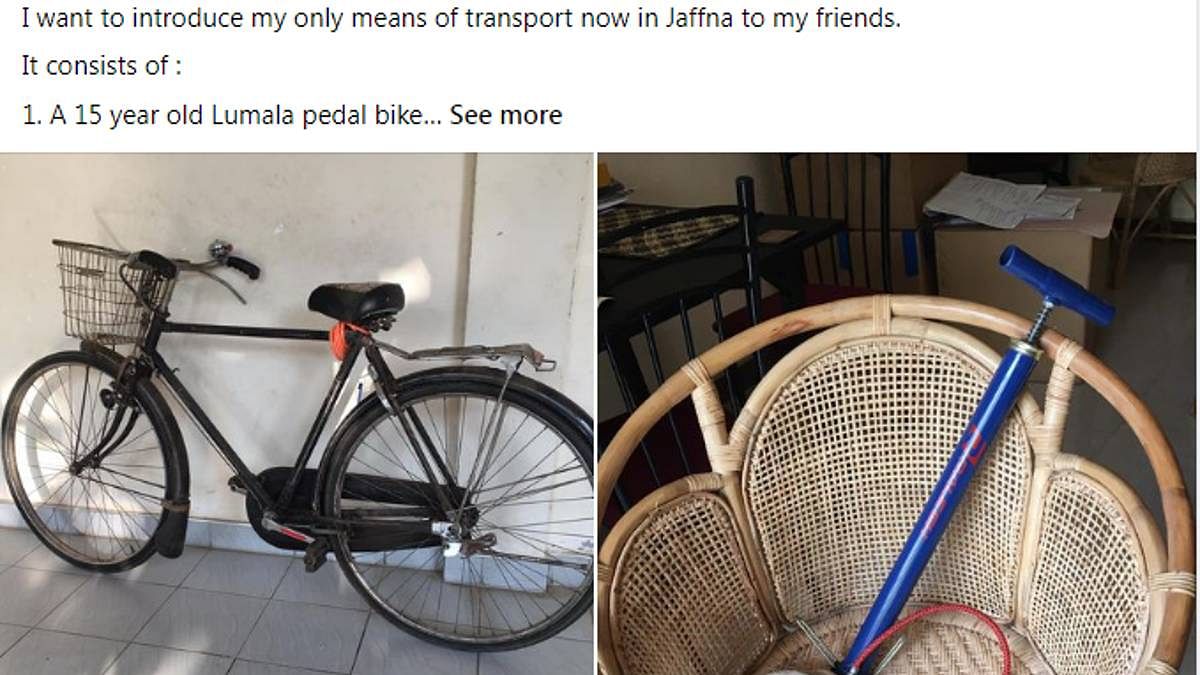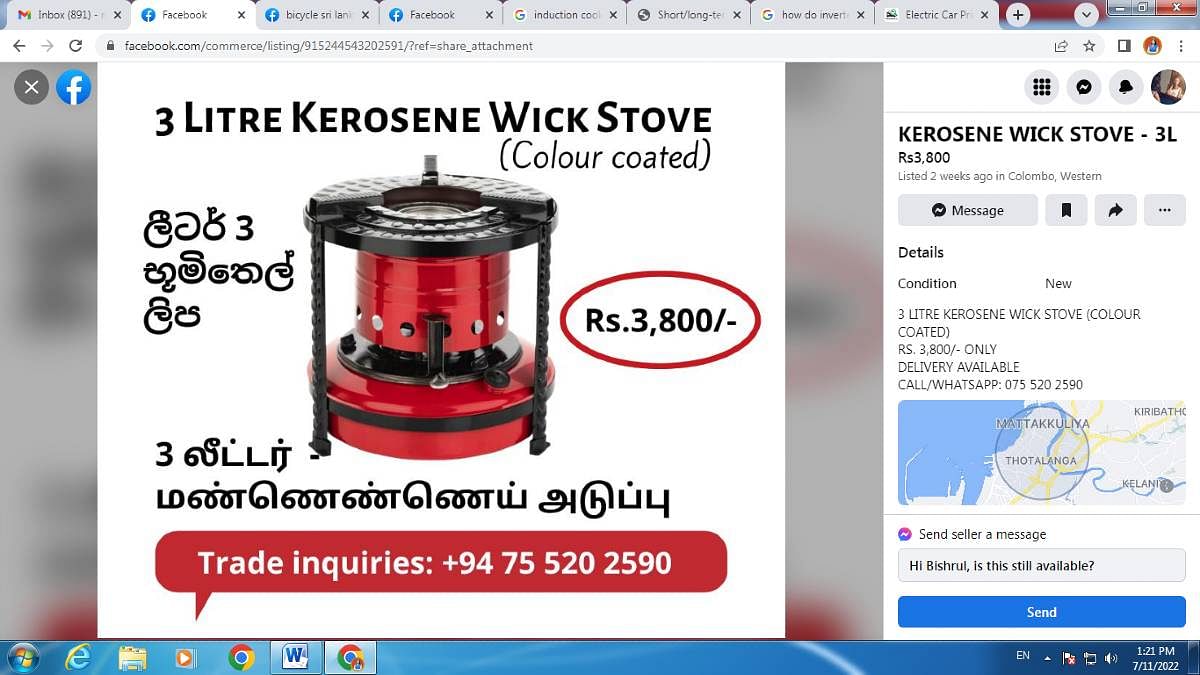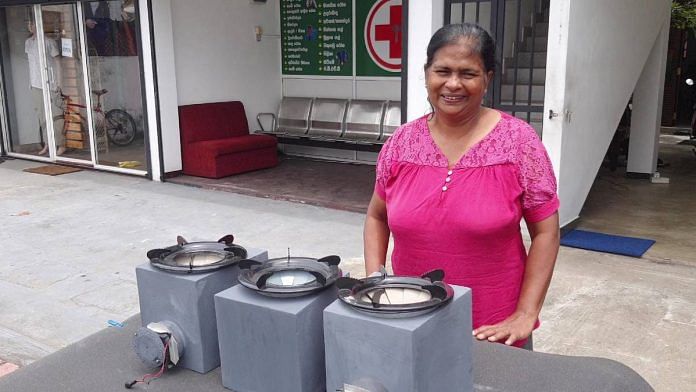Colombo: With an ongoing economic crisis and a government on the brink of collapse after months of turmoil — President Gotabaya Rajapaksa was forced to flee when protesters stormed his official residence Saturday, and he is expected to resign Wednesday — Sri Lanka is going through the grimmest phase in its modern history since the civil war ended in 2009.
The government has little to no money to buy essentials such as petrol, diesel, and cooking gas. The little that is available is prohibitively expensive. Schools have been closed, with classes moving online, and government employees working in non-essential sectors have been told to work from home, to cut down on fuel use.
To survive the crisis, Sri Lankans have come up with an array of hacks and improvisations. ThePrint lists a few.
Also read: Carrom at PM house, swimming in President residence — Lull after storm in Sri Lanka
Made-in-Sri Lanka charred coconut shell stoves
The price of a 12.5-kg cooking gas cylinder went up by 50 Sri Lankan rupees this month to Rs 4,910. It’s still available on the market, but with apprehensions of gas running out, many have taken to building stoves that use alternative sources of fuel.
In Thalawathugoda, a suburb of Colombo, ThePrint saw a woman selling one-ring stoves, which her husband had made by hand. The stoves use charred coconut shells as fuel.

To fire up the coconut shells, the stove comes with a power pack that can be plugged in to the electric supply. One stove costs 6,500 Sri Lankan rupees. The woman said it takes a week to build one stove.
While she started using one of these seven months ago, it was only on 3 July that she started selling them. Having started with 25, on 10 July she only had six left to sell.
Cycle and roller skate everywhere you can
Also in Thalawathugoda, ThePrint came across a crowded bicycle shop Sunday. While some were buying cycles, others were getting their old bikes fixed.
With the supply of automobile fuel running low, Sri Lankans have turned cyclists.

Social media is also filled with posts advertising bicycles for sale. In Jaffna — where they were already one of the main modes of transport — they appear to have become even more popular.
A taxi driver, ferrying passengers to and from Colombo airport, claimed bicycles may now cost as much as 60,000 Sri Lankan rupees. In normal times, they would be priced around 20,000-30,000 Sri Lankan rupees.
On the website of Lumala, a popular bike brand in Sri Lanka, most of the cycles were sold out when ThePrint checked Monday.

Amanda, a travel consultant based in Colombo, told ThePrint that her brother-in-law has taken to cycling 3 km to work. A lawyer said that when needed, he has cycled as far as 9 km to Colombo, while a law student based in Colombo told ThePrint, in all seriousness, that she was thinking of getting roller skates to travel.

Kerosene & firewood stoves, buy kerosene wherever you find it
Facebook in Sri Lanka is filled with posts advertising kerosene stoves. However, kerosene is also hard to find in parts of Colombo and its suburbs.
So Manjula (she didn’t want to disclose her full name), an employee at a private bank in Sri Lanka, told ThePrint that when her father visited Polonnaruwa (225 kms from Colombo) for work, he brought back some kerosene as it’s more easily available there than in Colombo.

In Colombo’s suburbs, firewood is being sold for about 80 Sri Lankan rupees a bundle.

Buy an induction cooker from Chennai and bring it back
ThePrint also saw Sri Lankans returning from India taking back induction cookers with them. These cookers run on electricity, which is currently not in short supply in Colombo and its suburbs.
At Chennai airport Sunday, ThePrint noticed a Sri Lankan travelling to Colombo carrying a new induction cooker. The yet-to-be-unpacked Pigeon brand cooker is available for under Rs 2,000 in India (about 9,165 Sri Lankan rupees). In Sri Lanka, induction cookers may cost as much as 30,000 Sri Lankan rupees.

People are also buying air fryers, electric ovens, electric kettles, rice cookers — anything that runs on electricity instead of cooking gas — in Sri Lanka, ThePrint has found
Install an inverter battery
When Sri Lanka was experiencing its worst power cuts in April, many also turned to inverter batteries that can store electricity and be used in case of a power cut. An Indian journalist based in Colombo told ThePrint that he was relying on a small inverter purchased for 65,000 Sri Lankan rupees, which could power two ceiling fans, two light bulbs, and a desktop computer for one-and-a-half hours.
Larger inverter battery systems cost about 1 million to 1.5 million Sri Lankan rupees, and inverters storing and working on solar energy cost in the range of 2-2.5 million rupees.
(Edited by Poulomi Banerjee)
Also read: Energy, infra, communication — India has big plans to help Sri Lanka & deepen relationship



